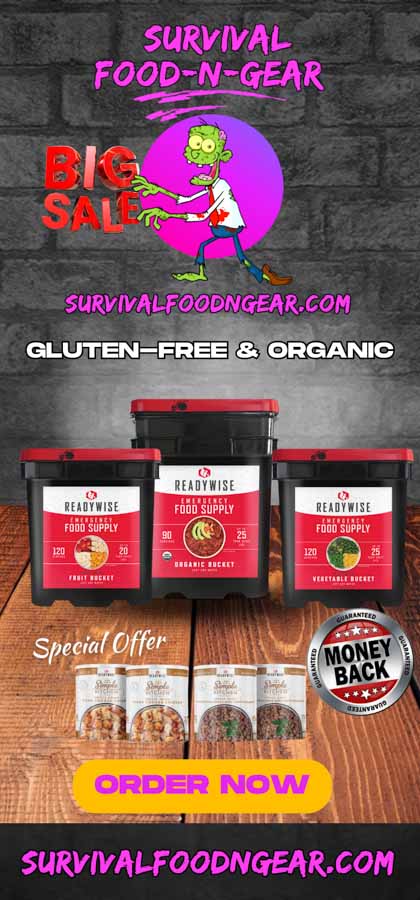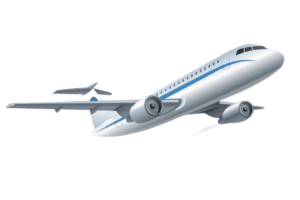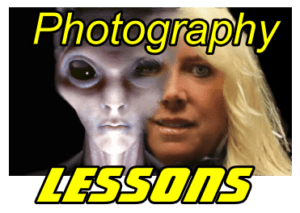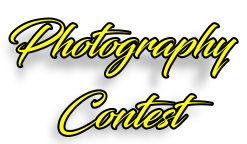PLEASE SHARE
At my own expense, I offer all of this to you: a humble tribute to Mother Gaia. It is my hope that you will spread my art and message to others, uplifting and inspiring their souls.
May my works guide photographers illuminating their path toward creating stunning and impactful images that show the raw beauty and essence of life in all its transcendent glory. —Pamela Goodyer
Lee’s Ferry Arizona Photography Location
Lee’s Ferry is situated on the Colorado River in Coconino County, Arizona, just south of the Utah/Arizona border. Lee’s Ferry is the only place within 100 miles where one can easily access the Colorado River from both sides. This historical site on the Colorado River served as an important river crossing; starting in the mid-1800s, this location was the site of a ferry operated by John Doyle Lee, for whom Lee’s Ferry is named. Today Lees Ferry is a well-known fishing and boat launching point, particularly for whitewater rafting trips through the Grand Canyon. Lees Ferry is considered the official beginning of Grand Canyon National Park on the Colorado River.
We discovered this location personally on a journey in December 2011 before Nat Geo had a similar shot as above in their magazine. We had come home from this trip and would send our pictures to them to be published. We got them all ready, and guess what came in the mail? It was the National Geographic February edition. We pulled it out of the mailbox and read the cover. It said Lee’s Ferry Little Known Undiscovered Wonder. Pam screamed at the top of her lungs for all the neighborhood to hear, “I DISCOVERED THIS PLACE!” So she did discover it. And guess what? Our picture on top of this page is better than theirs. :) Hence this was soon the beginning of the idea of having our magazine.
Anywho, This place is fantastic. One day after leaving the Lake Powell area, we found it on our usual daily explorations during one of our many journies. We always just let the universe guide us, but we occasionally ask humans for guidance. After getting our yearly National Park Passes, we stopped by the dam and spoke to a park ranger. She suggested a drive out to this spot. Little did I know how good of a photography location it would be. We saw a hotel on the hill when we arrived at the Navajo Bridge. We thought it would be expensive since we were in a photographer’s paradise. It turned out it was only $32.00 a night.
At dinner, we sat next to a group of backpackers going through the area. It was December, so there was barely a soul there. They had to open the restaurant for dinner and heat the grill because they had people.
You have to be careful out there alone since no one is around. We told the park rangers what we were driving because no one could hear you scream at that time of year! “There’s our car. Come and get us if we are not in it after sundown.” We told the park ranger with a smile and went on our journey. You can see some of the images on this page.
BEST TIME TO PHOTOGRAPHY LEE’S FERRY
Go during the Milky Way season to photograph it. See our Milky Way section for details of when you can see it. We go here every October, and the weather is perfect. I would choose spring or fall.
HOW LONG TO PHOTOGRAPH
Stay overnight for this location if you go during the Milky Way season; otherwise, plan on a few hours here.
HOW TO GET THERE
Lees Ferry is easily accessible from Page and the North Rim of the Grand Canyon. It is in Marble Canyon, just west of the Navajo Bridge Interpretive Center. A 5-mile paved road leads to the Ferry area.
OTHER PHOTOGRAPHY NEARBY
Check out Crash Boat, one of our other favorite Puerto Rico locations to do photography.
HOW BUSY DOES IT GET?
Not very. We’ve been here multiple times in October, and it was never busy. We’re unsure about other times of the year, but it’s doubtful.
ANYTHING ELSE?
Camping, dumping, and launching facilities are available here. Services such as a gas station, store, and post office are available at Marble Canyon. More services can be found along Hwy 89A to the west.
RESTAURANTS, CAMPING & WEATHER – SEE BELOW
This is also a great location for Milky Way photography—one of the best in the world. Read about Lee’s Ferry Milky Way here.
PHOTOGRAPHY GEAR LIST
- A sturdy tripod will be vital for getting Milky Way and milky water blur shots.
- A wide-angle lens will help you fit the majestic lighthouse and surrounding area into your frame. For this area, the wider the better.
- Bring a telephoto lens and monopod for wildlife photography to help stabilize your camera.
- Pack plenty of extra batteries and memory cards, as you’ll likely take many photos.
- Bring your macro lens to photograph the vast and intricate details of the surrounding nature.
- Pack an array of filters, from UV to polarized, to take the glare off the water and neutral density filters for long exposure to milky water effects.
- Bring a spare set of fully charged batteries and extra memory cards; you never know when a perfect shot will present itself, and the last thing you want is your camera battery.
WHAT ELSE TO BRING – A PACKING LIST
- Organic bug repellent. (Non-organic is very toxic)
- Organic Sun protection. (Non-organic sunscreen is a cancer cause.)
- Durable hiking boots for any trail or terrain you may encounter.
- Have a waterproof backpack or rain cover to protect your equipment.
- Packaging a rain jacket and long pants.
- A hat and sunglasses to shield yourself from the elements.
- A thermos for Milky Way photography nights.
PHOTOGRAPHY BASICS
SHUTTER PRIORITY:
You have moving subjects, you will want to shoot in shutter priority to ensure your shutter speed is high enough to have your subject in sharp focus. Approximately 1/250th of a second is appropriate for people walking by, and adjust your ISO accordingly. If they are moving fast, increase your shutter speed to about 1/500th of a second. A fast bird flying by would be shot at about 1/1000th of a second. If it’s a bright sunny day, go as high as 1/1200th of a second. Remember, the higher your shutter speed, the less light comes into the camera. For More Details, see our Shutter Priority Page.
MANUAL MODE:
You can do your long-exposure running and milky water shots if you have moving waters at the location. You will have to use a tripod for this effect. Your settings will vary depending on the lighting and your neutral density filter. You will shoot in manual mode for the milky waters. ISO is always 100 or as low as your camera will allow. The aperture is f22, or the highest f-stop your camera will allow. Your shutter speed will be the only variable depending on the light. Roll your shutter speed until your meter reads zero. (In the center) Use your shutter release or 2-second timer to prevent camera movement when exposing. You will want at least a 2-second exposure for milky water. If you don’t have a neutral density filter, you may not get more than 1/15th of a second in the sun.
You can buy an ND filter here. We highly suggest you do not go anywhere without one. Long exposure to moving waters makes all the difference between lifeless images and outstanding, dynamic images.
APERTURE PRIORITY:
Aperture Priority is often used to blur the background of your images and control your depth of field (how much from the subject to the background is in focus). For more information on this – see our Aperture page
ISO:
The higher you set it, the more light is when exposing an image. The higher the number, the more digital noise, so stay below 800. If you need to go higher to get the shot, you can use Topaz Denoise to filter out the digital noise later. See the ISO page here.
WHITE BALANCE:
Be sure to set your white balance each time the lighting changes. Auto mode is not always accurate on many cameras, and we prefer to set it manually. It’s one of the more straightforward basics of photography to master. If you need more help, you can get some more details here. See the white balance page here.
WATERFALL PHOTOGRAPHY:
If you’re going to do the milky water photography shots here along the water, you must have a tripod and a neutral-density filter. Preparing before embarking on a waterfall photography excursion is always best. You can also explore long-exposure waterfall techniques by visiting our waterfall photography page for tips.
LEE’S FERRY LODGE
This charming location has captured our hearts, and we have returned to it multiple times. It easily ranks in our top ten favorite spots in the world! Everywhere you look, a picturesque scene is begging to be captured through the lens. The vibrant colors of nature dance together harmoniously, creating stunning visual displays. We highly recommend this spot for photographers seeking unparalleled beauty and inspiration. From sunrise to sunset, every moment spent here is like stepping into a postcard to come to life.
HOTELS
Lee’s Ferry Lodge – Starting at $135.00Night – 541.5 Hwy 89A – Marble Canyon, AZ – (928) 355-2231
This rustic lodge in a stone-and-timber building is a 4-minute drive from Navajo Bridge Interpretive Center’s craft vendors and pedestrian bridge. Ten basic rooms and suites sleep up to seven (7) and are casually decorated, each with a unique theme. Each room opens onto a veranda with seating, including individual heat and air-conditioning controls. We stayed here, and our room had a country cowboy-type theme.
Lees Ferry Lodge at Vermilion Cliffs provides quiet and comfortable lodging for travelers in scenic northern Arizona.
The restaurant is open all day with breakfast, lunch, and dinner service. The accommodations are the perfect getaway for those traveling to Marble Canyon, the North Rim of the Grand Canyon, Vermilion Cliffs National Monument, Lake Powell, the Colorado River and many other beautiful and exciting places in the Southwest.
LeesFerryLodging@gmail.com Tell them Photography Magazine Extra sent you.
AREA
INFORMATION
Park Information
Entrance Fees – Weekly
1-7 Day Vehicle Entrance – $25.00
Admits one single, private, non-commercial vehicle and all its passengers
1-7 Day Motorcycle Entrance – $20.00
Admits one single, private, non-commercial motorcycle and its riders.
1-7 Day Individual Entrance – $12.00
Admits one individual when entering on foot, or bicycle. Not to exceed $25 vehicle fee. Individuals 15 years of age and younger are admitted free.
1-7 Day Boating Entrance – $30.00
Admits one single private vessel
1-7 Day Boating Entrance additional vessel – $30.00
Admits one single private vessel on the same trailer as a vessel paying full entry fees
Entrance Fees – Annual Passes
Glen Canyon National Recreation Area Annual Pass – $50.00
Allows unlimited entry to Glen Canyon for 12 months from the date of purchase.
Glen Canyon National Recreation Area Annual Vessel Sicker – $50.00
Allows unlimited entry to Glen Canyon for one vessel Jan 1 – Dec 31.
CAMPING
Where to Camp Near Lee’s Ferry
Add your campground here! Do you want us to send our photography and ghost-hunting friends to your campground to stay during their ghost-hunting trip? Put your campground information here. We will put a picture of your establishment, the website link, the phone number and your information on your campground to make it easy for our photographers and ghost hunters to find you. They are really good at getting there in the dark.
Would you like to be featured in an article as a place to stay while doing photography or ghost hunting? If so, please send us an email. You will be surprised at how affordable our prices can be.
Camping: Information for developed campgrounds, beach camping, primitive and reservation campgrounds.
Lees Ferry Campground
· $12 per night / per site
· 55 developed sites – no hookups
Lone Rock Beach
· $10 per night / per vehicle
· Beach Camping Area
Glen Canyon NRA Backcountry (Including Lake Powell Shoreline)
· No camping fee is required
· Primitive Camping
Note: Additional developed campgrounds, operated by Lake Powell Resorts & Marinas, are available at Wahweap, Bullfrog, and Halls Crossing. For details and rates call 1-800-528-6154.
Backcountry use in the Orange Cliffs Unit of Glen Canyon requires a backcountry permit from Canyonlands National Park
FOOD & DINING
Restaurants:
Lee’s Ferry Lodge has a restaurant that is just a few miles from Lee’s Ferry. The restaurant is open all day with service for breakfast, lunch, and dinner. The accommodations at the hotel are the perfect getaway for those traveling to Marble Canyon, the North Rim of the Grand Canyon, Vermilion Cliffs National Monument, Lake Powell, the Colorado River, and many other beautiful and exciting places in the Southwest.
There are a gas station and two total places to eat in this entire area so check their hours and plan accordingly.
WEATHER?
Lee’s Ferry Area Weather:
Lee’s Ferry weather can be found here.
Don’t forget that you can use a rain sleeve on your camera if it is raining. If it is bright and sunny, you want to use a low ISO such as 100.
If you are doing photography along with your ghost hunting on cloudy days, you can do running water or waterfall photography to avoid the glaring sun. You can also use an ND filter to get a long exposure for dramatic effects, even in the sunshine. If you ghost hunt indoors in abandoned places be careful!
















 Photography, Lessons, Workshops and Classes.
Photography, Lessons, Workshops and Classes.


